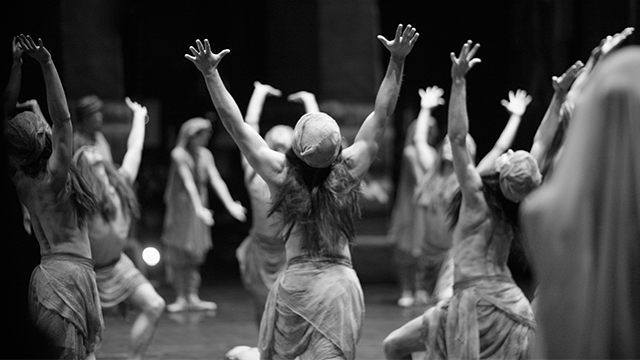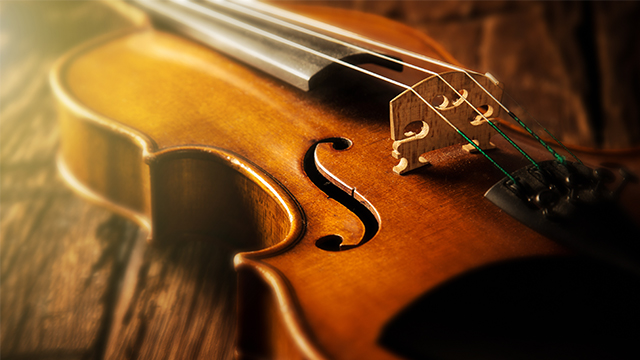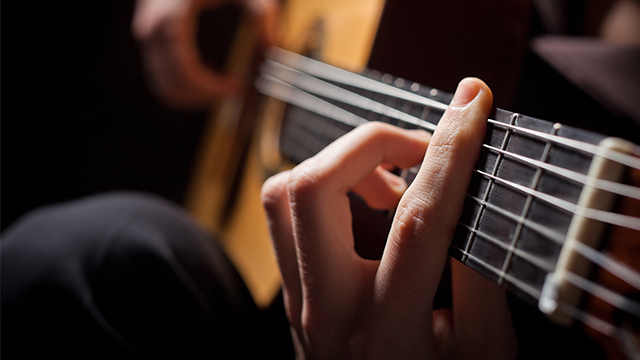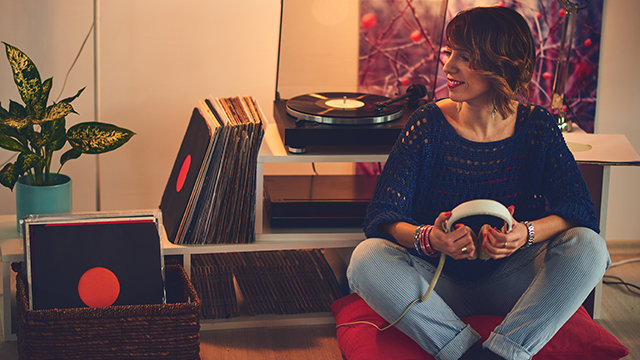4 Tips for Using Music as Part of Your Non-Musical Play
Written by Ashleigh Gardner
March 7, 2018
Are you a director/playwright who finds inspiration in music? Ever wonder how to put on a non-musical that also contains music? Get creative with these 4 ways to add music to your show. (And remember — if you’re using copyrighted music, you should have an ASCAP license and/or contact the individual copyright holders to gain permission to use the music!)
1. Pre-show segment

Pre-shows are directed the same way the rest of the play is directed (actors have blocking, motivation, activities onstage), but the only difference is that the audience is still coming in. Pre-shows can be completely silent or can involve two or more actors doing something together. (However, nothing that is central to the plot should occur during this time.) Where music comes in is the kicker: as the director, you can choose to use music as diegetic sound (music that occurs as part of the scene that is emitted from a radio/television/record player) or non-diegetic sound (music that is played as underscoring that does not appear from any source within the world of the play). With diegetic sound, the director has the option of having characters incorporate the music they’re listening to into the activities of the pre-show (dancing, bopping around, singing along, background music for a party, etc.).
2. Underscoring moments

There may be moments that you feel need a little extra something to give the scene more emphasis. This is where underscoring might come in. Underscoring is the playing of music quietly under a spoken dialogue or visual scene. You can use instrumental music or music with lyrics. The trick is to play the music low enough so that it doesn’t interfere with the words being spoken but loud enough so that the audience isn’t asking themselves “what is that sound?”
3. Live instrumentation/singing

This is usually a decision the playwright makes first and foremost (because if a director inserts a live song in the middle of a copyrighted work, it changes the playwright’s original work and intent). Playwrights can choose to write in a moment where a character may play a cover of a song by another artist. If the playwright is also a singer-songwriter, they may choose to write an original piece and insert it into the script for the character to play. (For those producing the play, remember to contact the appropriate copyright holder of the song being covered.)
4. Plot points

Another for the playwright — making mention of certain music artists and songs in your script can add to characterization and plot. Mentioning the name of an artist/album/song can give the audience a clue about what musical genre and era they most enjoy, which leads to discoveries about who the character is as a person. As far as plot is concerned, a particular song or artist or album may be the central object of contention between two characters, thus adding to the plot of the play. Do the characters argue over lyrics? Do they find themselves finally dancing to the best song on the album? Is the play itself about music?
Need some advice? We’ve got you covered.
- The Surprising Truth About College Auditions
- 9 Useful Diction Exercises for Every Actor
- How to Bow (And What Your Bow Says About You)
- 10 Basic Rules of Stage Combat (That Keep Everyone Safe)
- 5 Advantages of Learning Stage Combat
- Don’t Be a Diva: Common Pitfalls and How to Avoid Them
- 9 Articles of Clothing Every Thespian Should Keep In Their Wardrobe
- What Makes an Actor Website WOW?
- “Is my attitude not getting me roles?” And Other Essential Questions for Actors
- 6 Steps to Memorizing Shakespeare
- 10 Tricks to Staying Healthy All Season Long
- What Does It Take to Break Into Voiceovers?
- 5 Tips for Nailing Your College Music Theatre Audition
- 10 Tips on Owning the Room at Competition
- How to Balance Theatre and Coursework
- The 10 Secrets of Great Understudying
- 10 Items Every Actor Should Carry in Their Rehearsal Bag
- 10 Items Every Dancer Should Keep in Their Rehearsal Bag
